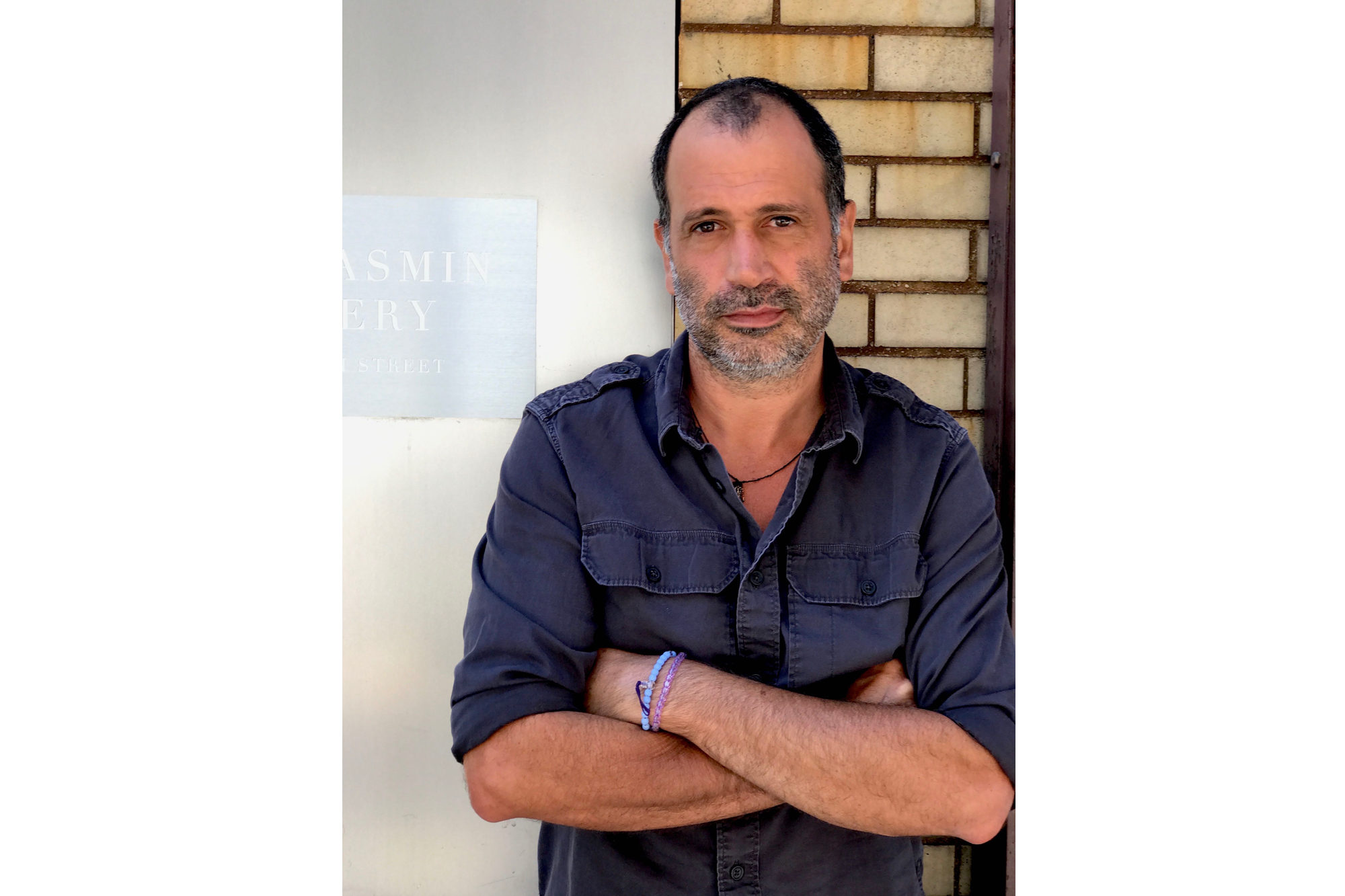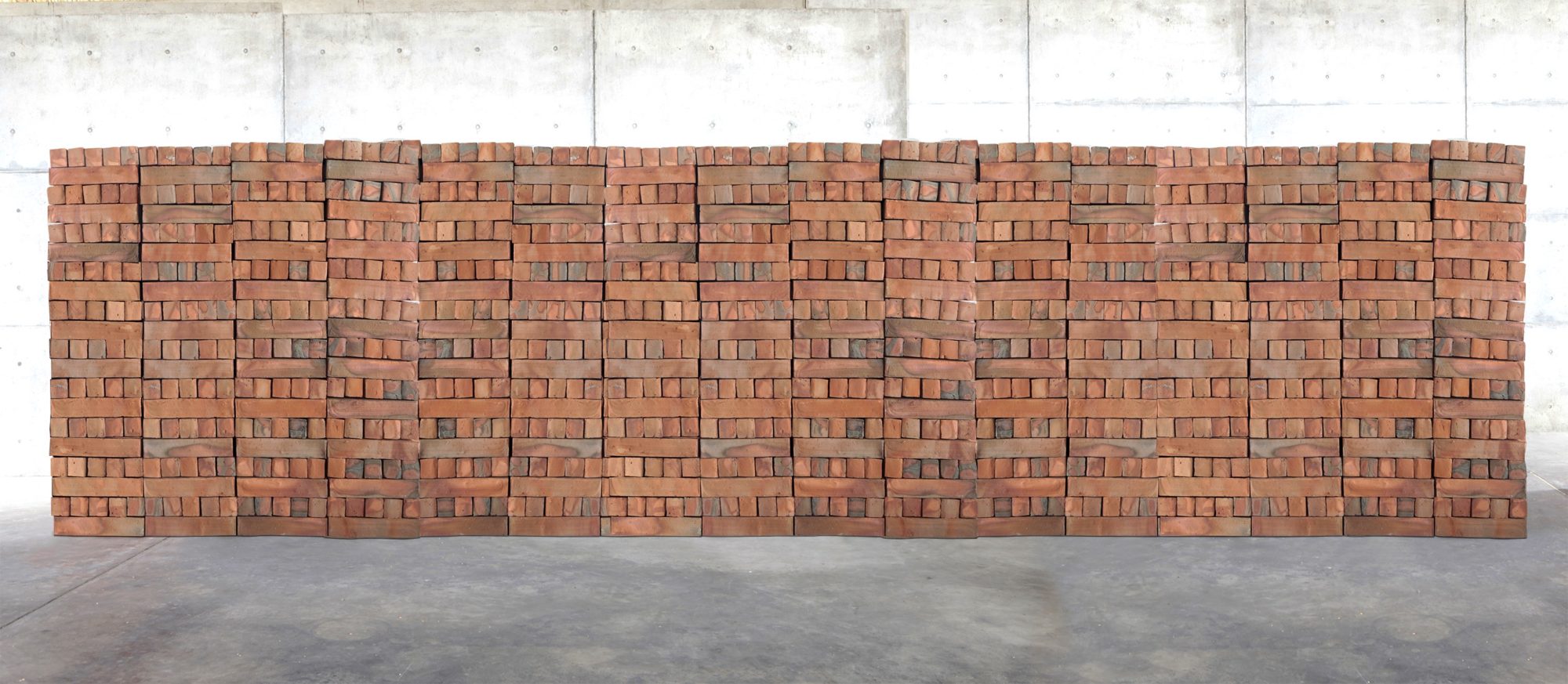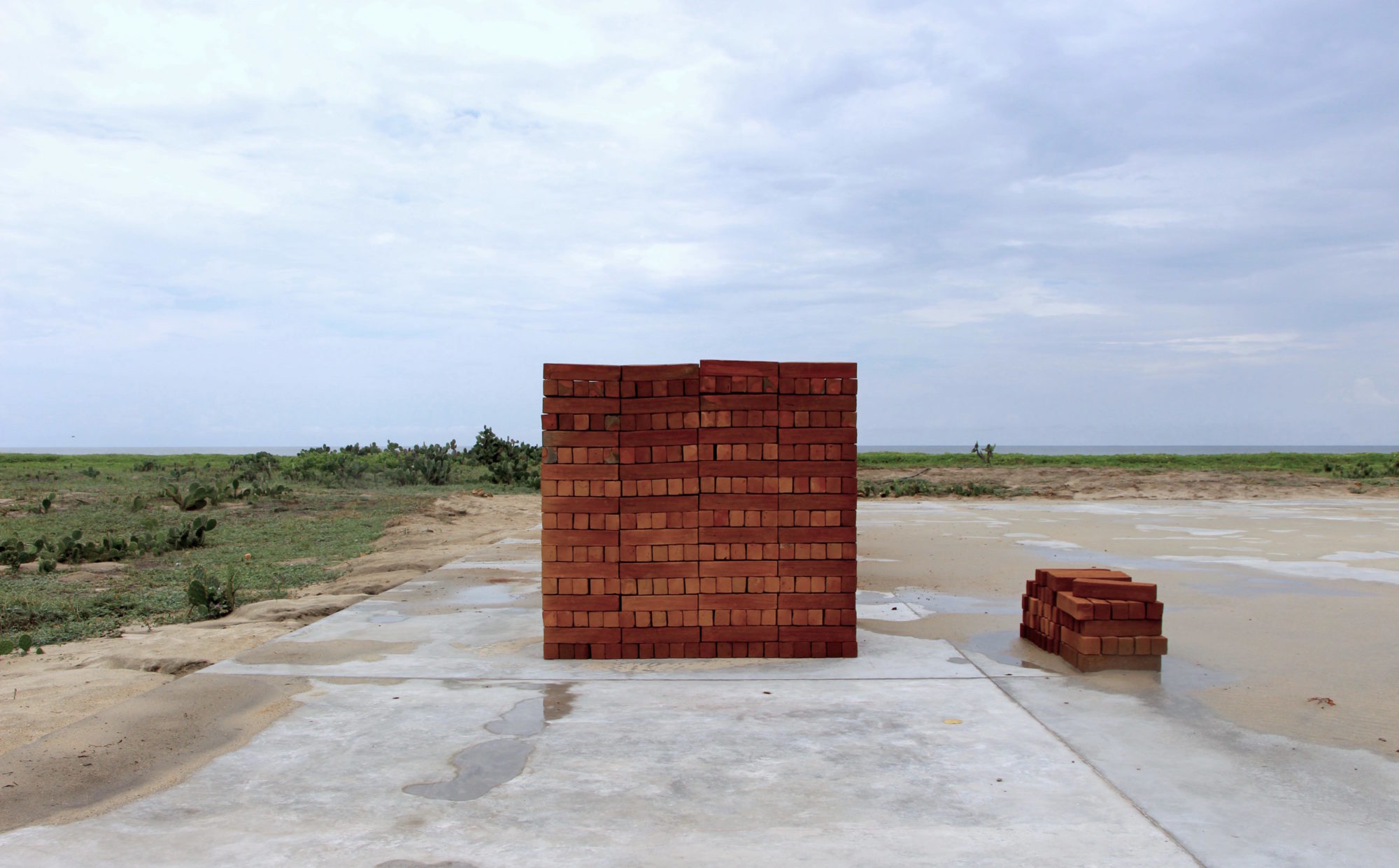Bosco Sodi is about to do something out of character. The Mexican-born artist, who splits his time between his studios in Brooklyn and Barcelona, is best known for his large-scale sculptures and paintings made from natural materials and pigments. Abstract and gestural, each of his richly colorful works is left untitled, ceding its interpretation to the viewer. But this time, it’s different. In his latest piece, entitled “Muro,” Sodi tells us exactly what he’s thinking.
On the morning of September 7, less than two weeks after President Donald Trump threatened a government shutdown if Congress would not fund his proposed border wall between the United States and Mexico, Sodi and a group of Mexican-born New Yorkers will gather in Washington Square Park to construct a 26-foot-long wall. The installation will be made of 1,600 clay timbers fired by hand in Oaxaca and transported by truck along the same route taken by emigrants who pass into Texas from the town of Nuevo Laredo. Beginning at 3 p.m., spectators (of any nationality) will be welcome to dismantle the wall brick by brick—each one signed by Sodi—and take part of the artwork home.
Over a glass of orange juice in west Chelsea, Sodi talks about how the piece, his first public installation in Manhattan, came to be.
What inspired the piece?
I was working in my Oaxaca studio, on clay cube sculptures. My guys [local craftsmen] hauled these clay timbers in and set them up like a wall. I looked at it, and I just realized that this work must be done in a political way. Right now, I have this awareness that everyone is political—even my kids talk politics at school. This wall is, in a way, an act of resistance.
And you’re inviting others to join the resistance. Why make “Muro” a communal act?
To show that any wall is dismantlable. We, the public, can tear down walls when society gets together. It could be a mental, physical, or political wall—the point is, it’s dismantlable and ephemeral. Even if Trump’s wall is built, it will be destroyed by the next President. Look at history. All the walls in history have been destroyed and will be destroyed.
The bricks are made of clay from Oaxaca. Why is that important?
It’s all about manual labor. Making raw clay into hand-fired terra-cotta bricks involves a labor force. The guys who source these bricks were either illegal immigrants at one point of their lives, or they are striving to come to America. It is their dream. But right now, it’s impossible.
For me, it’s also a beautiful concept. The process of making each timber requires Mexican earth, fire, wind, and water. When you burn these bricks, their color and texture changes and each one is unique. That’s why I signed each one; [they are each] a piece of art.
Your work is typically untitled. Why did you decide to break your own rule with “Muro”?
To title a piece is to think you have control over it, which is just an illusion. But in this case, I wanted the public to have a very fixed idea about it. It is my first political work, and it’s a performance in a way. So, I wanted it to be very specific, even though there is still chance involved. We can’t know how people will react.
That’s a recurring theme in your work—volatility. And “Muro” deals with a particularly volatile subject. Are you at all concerned about violence?
We chose Washington Square because NYU is there, a liberal college that kind of symbolizes free speech. My reps at Paul Kasmin Gallery organized it with full support from the city. So, we really expect it to be positive. It’s a kind of party. We’ll be dismantling a wall together, and that’s a celebration. It’s a metaphoric and poetic action, and people can take a piece of it home. By 3:30, the entire wall might be gone.
Trump recently called for a doubling of border-patrol troops on the Mexican border. What do you think of that?
That isn’t the way to stop the problem. The way to stop it is to understand the roots of migration, and invest in the country migrating. It’s illogical to think you can fix this problem with your thumb—the border is huge.
Who will build this wall with you?
Mexican friends of mine—writers, opera singers, including Mauricio Trejo, architect Enrique Norten, architect Jorge Ambrosi, chef Gabrielle Chiavari, and artist Mario Navarro. We are immigrants. We give a lot to New York, and I want them by my side. My wife and three kids will build it, too. We’ll be there, come rain or shine. But, who knows? Maybe Trump will pray for rain that day.
Bosco Sodi: “Muro”
Washington Square Park, New York City
September 7, 2017
Dismantling begins at 3 p.m. and will conclude by 8 p.m.



